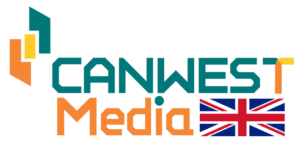Introduction
In today’s saturated digital landscape, creative advertising is the engine driving real business results, while media spend on targeting and channels are important, compelling creative multiplies profit and strengthens brand equity. A report found that emotionally led, brand building creative can boost ROI by up to 12 times, far outperforming short term activation campaigns. For businesses, understanding how to measure and optimize creative investment is critical. Here’s how companies can turn creative ideas into measurable profit while proving their commercial impact.
1) Link Creativity Directly to Profit:
Great creativity doesn’t just get attention, it drives real business results. For example, an insurance company used the same character in multiple ads, making the brand more memorable and lowering the cost of getting a policy quote by 18 percent. This shows that smart, emotionally engaging campaigns can boost both brand recall and sales. Pretest creative ideas using predictive tools and modeling to identify which concepts are most likely to succeed. Focus on campaigns that combine emotional storytelling with measurable outcomes, ensuring your creative investment compounds over time.
2) Measure Attention and Outcomes Together:
Research shows that the more attentive a viewer is, the higher the likelihood that creativity will translate into action. It’s not just about how many people see your ads, but how focused they are when they do. For example, a grocer moved part of its ad budget to placements that held viewers’ attention longer, boosting engagement by 35 percent. They only expanded the campaign after testing showed this actually increased sales by 3.4 percent. Buy media for attention but optimize for real world impact. Combine attention metrics with geo tests or controlled experiments to measure incremental revenue, not just impressions.
3) Build a Ready Measurement Stack:
As tracking evolves and third party cookies disappear, new tools like ISBA’s Origin and CFlight help measure your audience without overlap. They show clearly how your creative reaches and influences people across multiple channels. Plan campaigns with de duplicated reach, layer geo experiments for creative lift and adopt lightweight Marketing Mix Modeling (MMM). Use secure, privacy friendly data systems, called clean rooms, with your partners to track which sales came from which creative campaigns accurately.
4) Prove ROI with Trusted Tests:
CFOs want real numbers. Run regional split tests, track in store sales, and follow customer cohorts over time to see the true profit impact of your campaigns. For instance, a home brand discovered that 41% of its extra profit came directly from a single brand film. Use structured experiments and robust attribution methods to quantify the contribution of your creative assets. This evidence ensures that creative decisions are defensible and linked directly to business performance.
5) Your Simple Creative ROI Scorecard:
To measure creative ROI effectively, track a few core metrics each month: unique reach of top assets, attentive impressions, new to brand customers and blended CPA, incremental revenue from tests, 12 week profit impact via MMM, and audience recall of key brand elements like logos, sounds, or characters. Keep this scorecard updated and review it regularly to identify which creative elements are driving real ROI, allowing you to invest wisely and optimize campaigns in real time.
Conclusion
Creative advertising is more than aesthetics, it’s a profit engine. Businesses that combine compelling storytelling with data driven measurement, attention optimization, and structured tests can confidently link creative work to real revenue growth. By adopting a simple scorecard and proving ROI at every step, companies can make informed decisions, defend their marketing budgets, and unlock the true potential of creativity in their campaigns.
